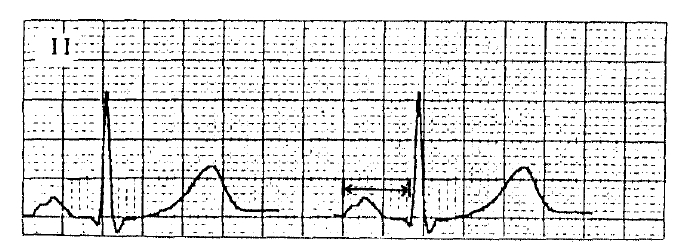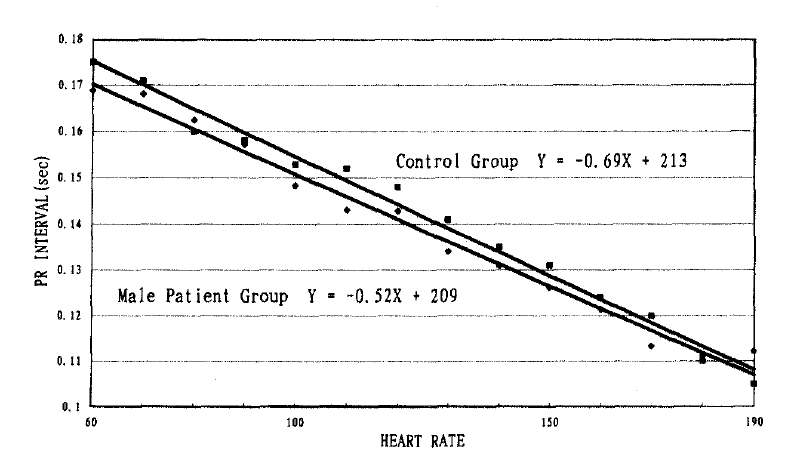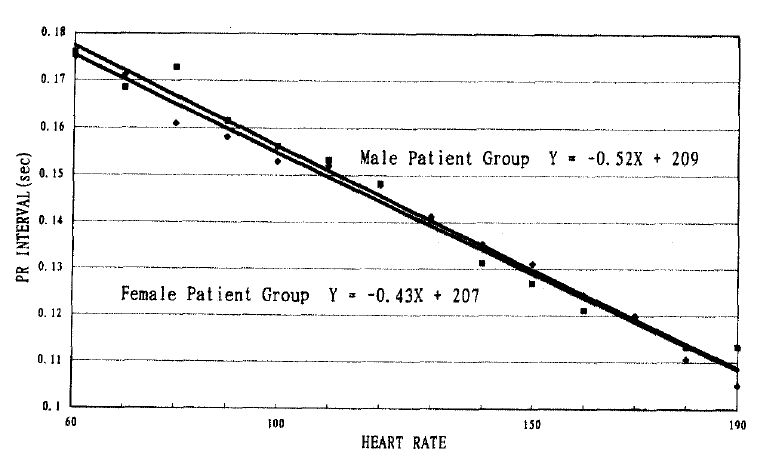1. Karlof I. Hemodynamic effect of atrial triggered versus fixed rate pacing at rest and during exercise in complete heart block. Acta Med Scand 1975;197:195–206.

2. Daubert C, Ritter P, Mabo P. Physiological relationship between AV interval and heart rate in healthy subjects: Applications to dual chambered pacing. PACE 1986;9:1032–1039.


3. Simmoons ML, Hugenholtz PG. Gradual changes of ECG waveform during and after exercise in normal subject. Circulation 1975;52:570–577.


4. Tail TB, John PN, Tsung OC. Systolic time intervals in patients with artificial pacemakers. Am J Cardiol 1973;32:287–290.


5. Wehr M, Schmitt GG, Noll B, Krappe J. The effect of heart rate and A-V interval on left ventricular ejection time(LVET) and contractility PEP/LVET in patients with A-V universal pacemaker. PACE 8:Part II, A9 (Abstr 35),. 1985.
6. Von Bibra H, Bush U, Stangl K, Wirtzfeld A. The benefical effect of short AV intervals in VDD pace-maker patients. PACE 8:Part II, A9 (Abstr),. 1985.
7. Iwase M, Sotobata I, Yokota M. Evaluation by pulsed Doppler echocardiogrphy of the atrial contribution to left ventricular filling in patients with DDD pace-makers. Am J Cardiol 1986;58:104–9.


8. Perry GJ, Nanda NC. Evaluation of pacemaker dynamics by Doppler echocardiogrphy. J Electrophysiol 1987;1:173–88.
9. Vidden JS, Juang SK, Bazgan ID, Mechling E, Patton DD. Hemodynamic comparison of ventricular pacing using radionuclide ventriculogrphy. Am J Cardiol 1986;57:1305–8.


10. Tschliessnigg KH, Stenzl W, Dacard D. Hemodynamic importance of a constant AV delay. PACE 8:Part II, A38(Abst 150),. 1985.
11. Kafka W, Hildebrandt U, Delius W. Hemodynamic advantage of AV sequential pacing with respect of the AV delay. Pace 8:Part II, A38(Abst 151),. 1985.
12. Ausbel K, Steingart RM, Shimshi M, Klementowicz P. Maintenance of exercise stroke volume during ventricular versus atrial synchronous pacing; Role of contractility. Circulation 1985;72:1037–42.


13. Lister JW, Stein E, Kosowsky BD. Atrioventricular conduction in man; Effect of rate, exercise, isoprterenol and atropine on the P-R interval. Am J Cardiol 1977;16:516.

14. Brockman SK. Dynamic function of atrial contraction in regulation of cardiac performance. Am J Physiol 1963;204:597–603.


15. Skinner NS, Mitchell JH, Wallace AG, Sarnoff SJ. Hemodynamic effects of altering the timing of atrial systole. Am J physiol 1963;205:499–503.


16. Teo KK, Jetherington M, Haennel RG, Greenwood PV. Cardiac output measured by impedance cardiography during maximal exercise tests. Cardiovasc Res 1985;19:737–43.


17. Barbieri D, Percoco T, Toselli T, Guardigli G. AV delay and exercis stress tests: Behavior in normal subjects. PACE 1990;13:1724–7.


18. Greenberg B, Chatterjee MB, Parmley WW, Werner JA. The influence of left ventricular filling pressure on atrial contribution to cardiac output. Am Heart J 1979;98:742–51.


19. Leman RB, Kratz JM. Radionuclide evaluation of dual chamber pacing; Comparision between variable atrioventricular intervals and ventricular pacing. PACE 1985;8:408–14.


21. Margaret R, Robert GH, William RB, Tissa K. Effect of rate-adapting atrioventricular delay on stroke volume and cardiac output during atrial synchronous pacing. Can J Cardiol 1990;6:445–52.

22. Gianorssi R, Detrano R, Mulvihill D. Exercise induced ST depression in the diagnosis of coronary artery disease. Circulation 1989;80:87.









 PDF Links
PDF Links PubReader
PubReader ePub Link
ePub Link Full text via DOI
Full text via DOI Download Citation
Download Citation Print
Print





